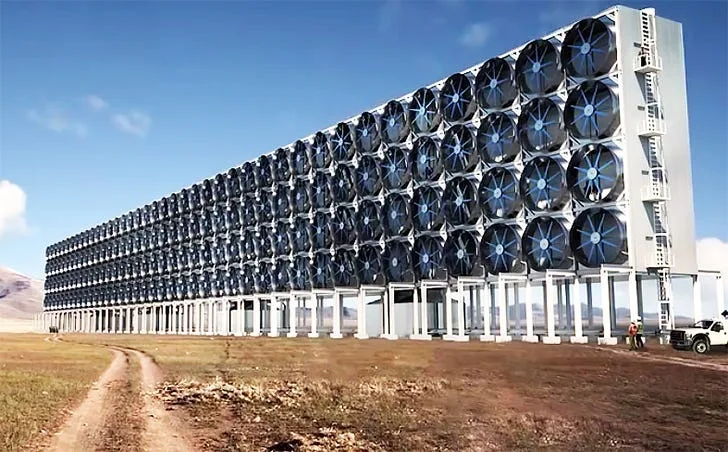
Direct Air Capture Technology Review
Direct Air Capture (DAC) technology has emerged as a groundbreaking solution in the fight against climate change. This article provides a comprehensive review of DAC, exploring its origins, implementation, purpose, current applications, potential future uses, and productivity.
What is Direct Air Capture and When Was it Invented?
Direct Air Capture (DAC) is a technology designed to extract carbon dioxide (CO2) directly from the atmosphere. The concept was first introduced in the early 21st century, with significant advancements occurring over the last decade. DAC technology operates on the principle of capturing atmospheric CO2, which is then either stored underground or repurposed for various industrial applications. The invention of DAC is attributed to the growing recognition of the need for scalable solutions to address global carbon emissions. The first operational DAC plants were established in the 2010s, marking a pivotal moment in the development of carbon capture technologies.
How is Direct Air Capture Implemented and What Does it Do?
Direct Air Capture systems typically involve large fans that draw ambient air into contact with chemical solutions or solid sorbents. These substances selectively bind with CO2, separating it from other atmospheric components. The captured CO2 is then subjected to a regeneration process, releasing it in a purified form for storage or utilization. Implementing DAC requires significant energy inputs, often sourced from renewable energy to ensure the overall process remains carbon-neutral.
The primary function of DAC is to reduce the concentration of CO2 in the atmosphere, thereby mitigating the greenhouse effect and helping to stabilize global temperatures. By capturing CO2 directly from the air, DAC complements other carbon reduction strategies such as emission reductions and natural carbon sinks like forests and oceans.
What Problem is Direct Air Capture Designed to Solve?
Direct Air Capture technology is designed to address the critical problem of excessive CO2 emissions, which are a major driver of global climate change. As industrial activities and deforestation continue to increase atmospheric CO2 levels, DAC provides a means to actively reduce these concentrations. This technology is particularly valuable because it offers a method of carbon removal that is not reliant on emissions reductions alone, making it a crucial tool in achieving net-zero carbon targets.
Where is Direct Air Capture Already Used?
Direct Air Capture technology is already being deployed in various locations around the world. One of the most notable implementations is in Switzerland, where Climeworks operates multiple DAC plants. These facilities capture CO2 and supply it to greenhouses and beverage companies, among other clients. Similarly, in Iceland, the CarbFix project integrates DAC with underground storage, where captured CO2 is mineralized into stable rock formations.
In Canada, Carbon Engineering has developed a large-scale DAC facility that captures CO2 for use in synthetic fuels production. The United States also hosts several DAC projects, including Global Thermostat’s pilot plants that supply captured CO2 for industrial uses. These examples demonstrate the diverse applications of DAC technology and its growing role in global carbon management strategies.

Where Else Can Direct Air Capture Be Used?
The potential applications of Direct Air Capture technology extend beyond its current uses. One promising area is in the production of synthetic fuels, where captured CO2 can be combined with hydrogen to create low-carbon fuels. This approach could significantly reduce emissions from sectors like aviation and shipping, which are challenging to decarbonize through electrification alone.
Another potential use for DAC is in the production of building materials. By incorporating captured CO2 into concrete and other construction materials, it is possible to create carbon-negative products that contribute to reducing overall emissions in the construction industry. Additionally, DAC could play a role in enhancing soil fertility through the production of biochar, a stable form of carbon that improves soil health and sequesters carbon for extended periods.
How Productive is Direct Air Capture?
The productivity of Direct Air Capture technology is measured by its capacity to remove CO2 from the atmosphere effectively. Current DAC plants can capture thousands of tonnes of CO2 annually, with some of the largest facilities aiming to scale up to millions of tonnes per year. However, the energy requirements and costs associated with DAC remain significant challenges.
To improve productivity, ongoing research focuses on enhancing the efficiency of CO2 capture materials and reducing the energy intensity of the regeneration process. Advances in renewable energy integration are also crucial, as they ensure that the energy used for DAC does not offset the carbon reduction benefits.
Overall, while Direct Air Capture technology is still in the early stages of widespread adoption, its potential to contribute to global carbon management efforts is substantial. As technology advances and costs decrease, DAC is expected to become an increasingly viable option for large-scale carbon removal.
Popular articles
-
 Digital twins in 2025–2026: real city, fac...
Digital twins in 2025–2026: real city, fac...Digital twins have moved well beyond the “nice-to-have” stage. In 2025 and …
Learn more -
 Why Modern Technologies Are Becoming More ...
Why Modern Technologies Are Becoming More ...Modern technologies are developing at a pace that few users can fully …
Learn more -
 Next-Generation Home Batteries: Hybrid Ene...
Next-Generation Home Batteries: Hybrid Ene...Hybrid home batteries have become a practical foundation for residential energy autonomy …
Learn more
